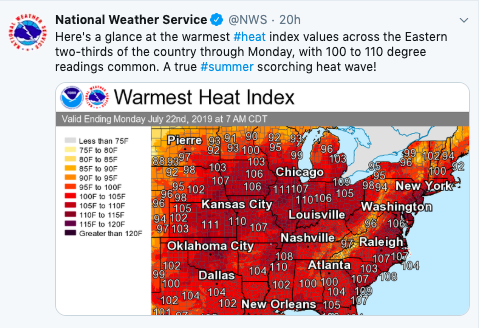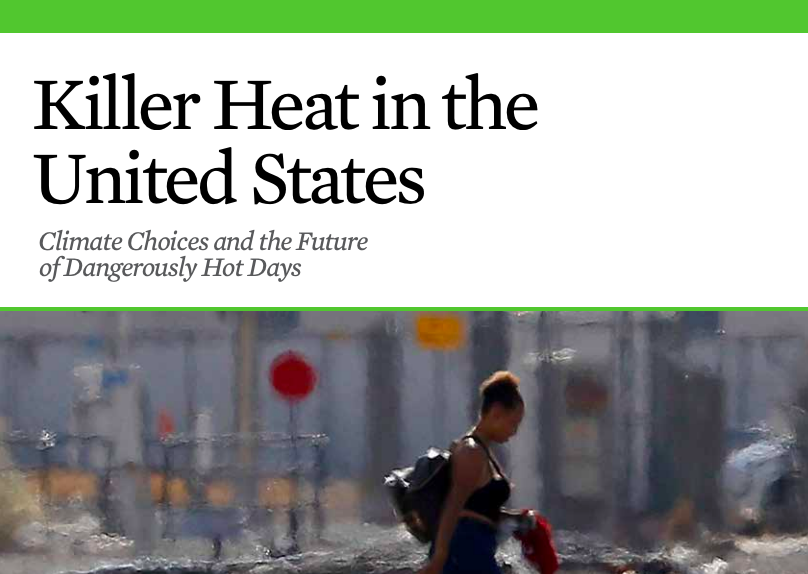
The National Weather Service (NWS) warned that a “widespread and dangerous heat wave is building in the central and eastern U.S. this weekend – with more than a hundred fifty million people under heat watches and warnings, as the actual air temperature is forecast to reach at least 95 degrees for more than half the population of the continental U.S. And the Union of Concerned Scientists issued a report this week (right on cue) that concludes that “[b]y mid-21st century (2036–2065) under both emissions scenarios, the annual numbers of days with heat indices exceeding 37.8 °C (100 °F) and 40.6 °C (105 °F) are projected to double and triple, respectively, compared to a 1971–2000 baseline.”
Why This Matters: Heat can be deadly – just as deadly or more so than other weather hazards. This heatwave and the conclusions of the new report are not surprising given what we already know about climate change trends and what we see happening around the U.S. like wildfires and extreme storms. But because hot temperatures impact things like increased demand for heat-related health impacts, increased electricity demand for air conditioning and the need for limits on outdoor working due to local conditions. Policymakers should be thinking ahead about how to deal with these impacts in order to fully protect the public.
Hot Hot Hot This Weekend
The Weather Service’s Advisory on Thursday forecast the following:
- “High temperatures in the 100s for the Southern and Central High Plains, with 90s widespread farther east.”
- “Overnight low temperatures will not provide much relief.”
- “Dozens of high minimum temperature records are forecast to be set, with a few record high maximum temperatures possible as well.”
And this heat danger (particularly at night) is compounded by the “heat island” effect — built-up areas are hotter than nearby rural areas do so that a city with 1 million people or more can be 1.8–5.4°F warmer than the surrounding areas. And every degree matters.
Union of Concerned Scientists Not Mincing Its Words on Heat Danger
The report’s title should give people pause — it’s called “Killer Heat in the United States: Climate Choices and the Future of Dangerously Hot Days.” But the conclusions are even more chilling (bad pun), such as:
- The average number of days per year with a heat index above 100°F will more than double, while the number of days per year above 105°F will quadruple.
- More than one-third of the area of the United States will experience heat conditions once per year, on average, that are so extreme they exceed the current NWS heat index range—that is, they are literally off the charts.
- Nearly one-third of the nation’s 481 urban areas with a population of 50,000 people or more will experience an average of 30 or more days per year with a heat index above 105°F, a rise from just three cities historically (El Centro and Indio, California, and Yuma, Arizona).
Bottom Line: “in many places, extreme heat will lead to an increase in deaths or illnesses, disrupt long-standing ways of life, force people to stay indoors to keep cool, and perhaps even drive large numbers of people away from areas that become too unpleasant or impractical to live.”

July 18, 2019 » extreme heat, heat, heat island, Killer Heat, National Weather Service, Union of Concerned Scientists

